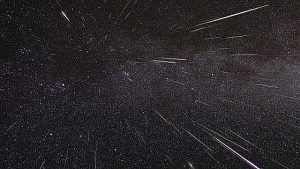Ever since a meteorite shot overhead while on my way to a very early morning Y swim, I’ve been hooked on meteorite watching. Catching a falling star sounds romantic when it’s in a song but knowing when to watch for shooting “stars” can be exciting or even a reason to have party.
The next prominent meteor shower in 2017 is mid November when the Leonids peak after midnight between Nov. 17 and 18.

Where weather is not a factor, Leonids watching will be good because the moon will be in its new phase so there will be no moonlight to make them harder to see.
Of course meteorites are harder to spot in a highly lit area or where the sky glows from city lights so seek out an area near a lake, a park but for safety’s sake go in pairs.
As to where the Leonids come from, think of them as debris left from the Tempel-Tuttle comet.
You see the debris as meteorites when planet Earth’s orbit takes it through the debris. The meteor shower gets its name because they seem to come from a point in the Leo constellation.
What to expect. Look overhead but a bit towards the east. If lucky you may spot about 20 bright, fast meteorites streaking across the sky in an hour. They typically travel about 44 miles per second.
Some years have produced more but about 15 to 20 per hour is a reasonable expectation if watching after midnight when Nov. 17 has turned into Nov. 18. I have spotted them early dawn just before sunrise in mid-November of past years. However, Earth is traveling through the Leonids most of November.
For more meteor and Leonids info check out Time and Date, Space and NASA.
